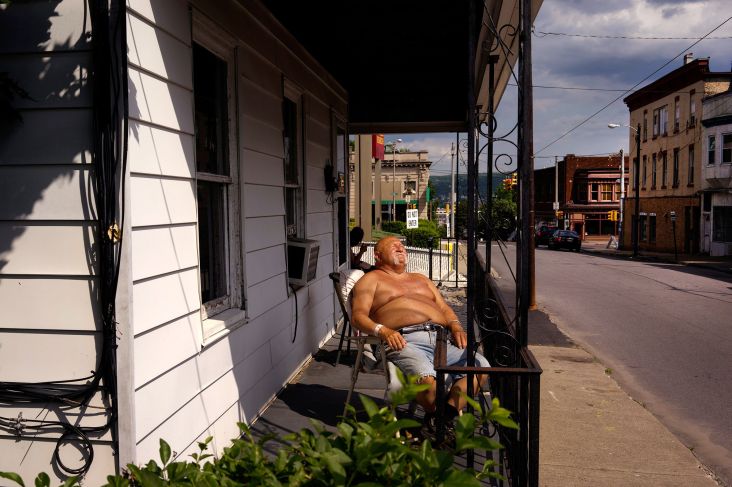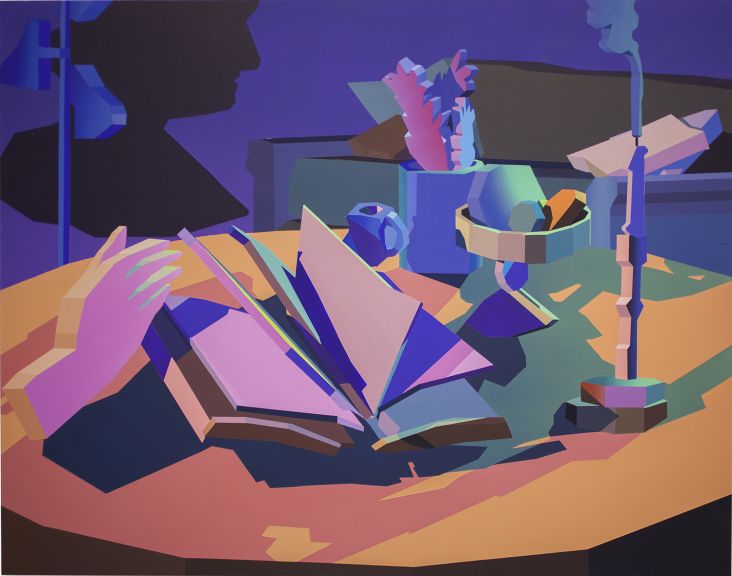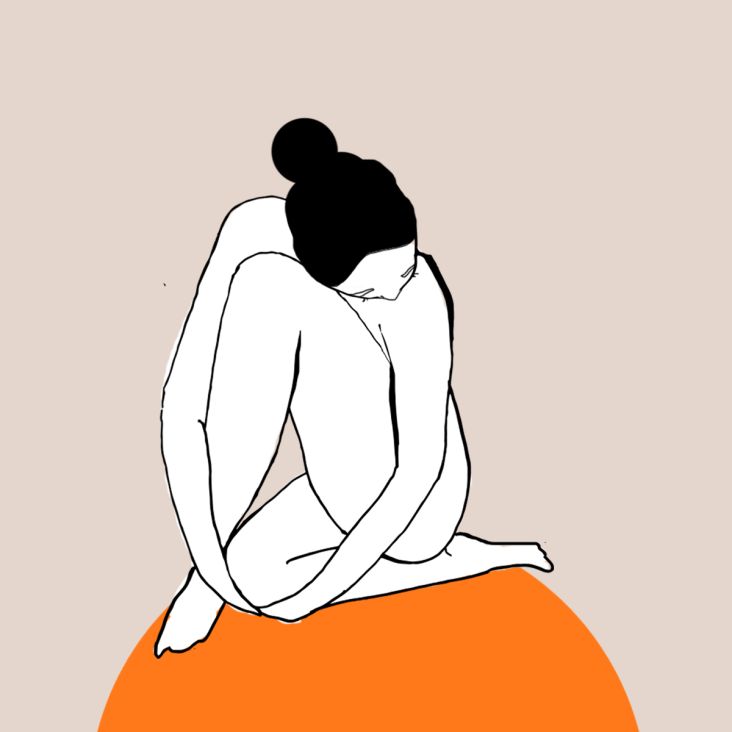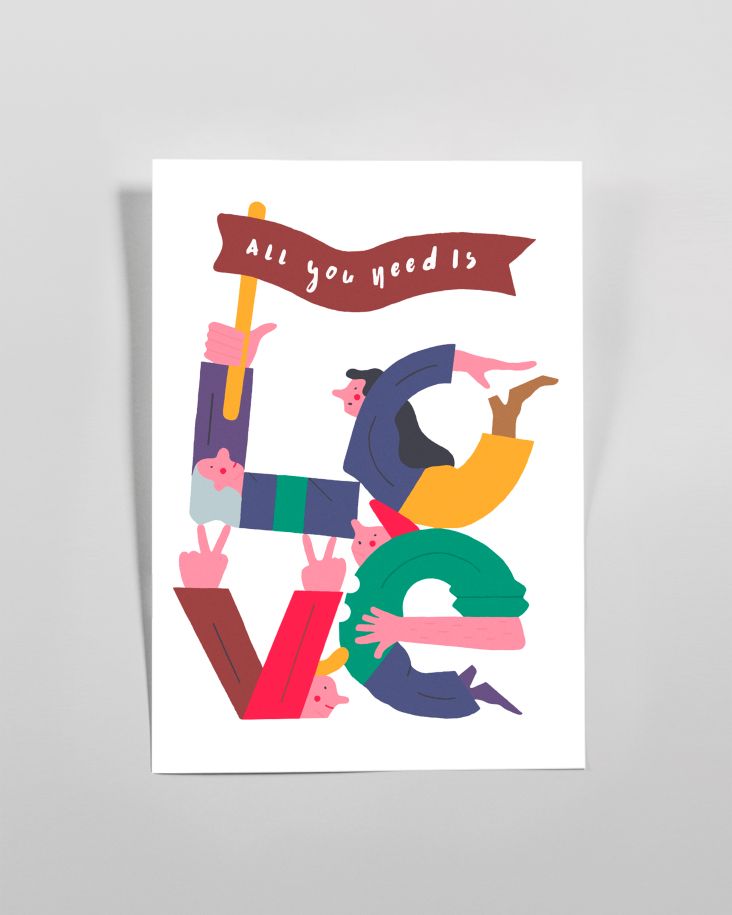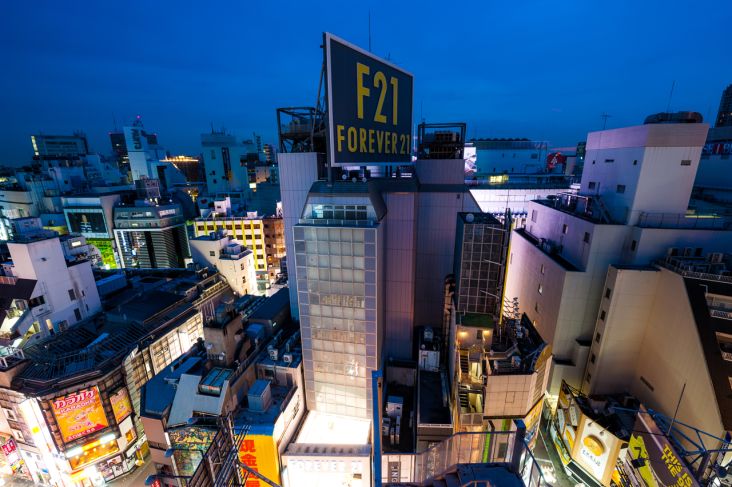A creative’s guide to Slovenia: A fairy-tale-like country full of picture-book charm
Stressed by deadlines? Dreaming of disappearing to a quiet place, full of old-world, picture-book charm? But can’t afford to be away from the creative world? Well, here’s a secret: all this is available in abundance in the beautiful, fairy-tale-like country of Slovenia.
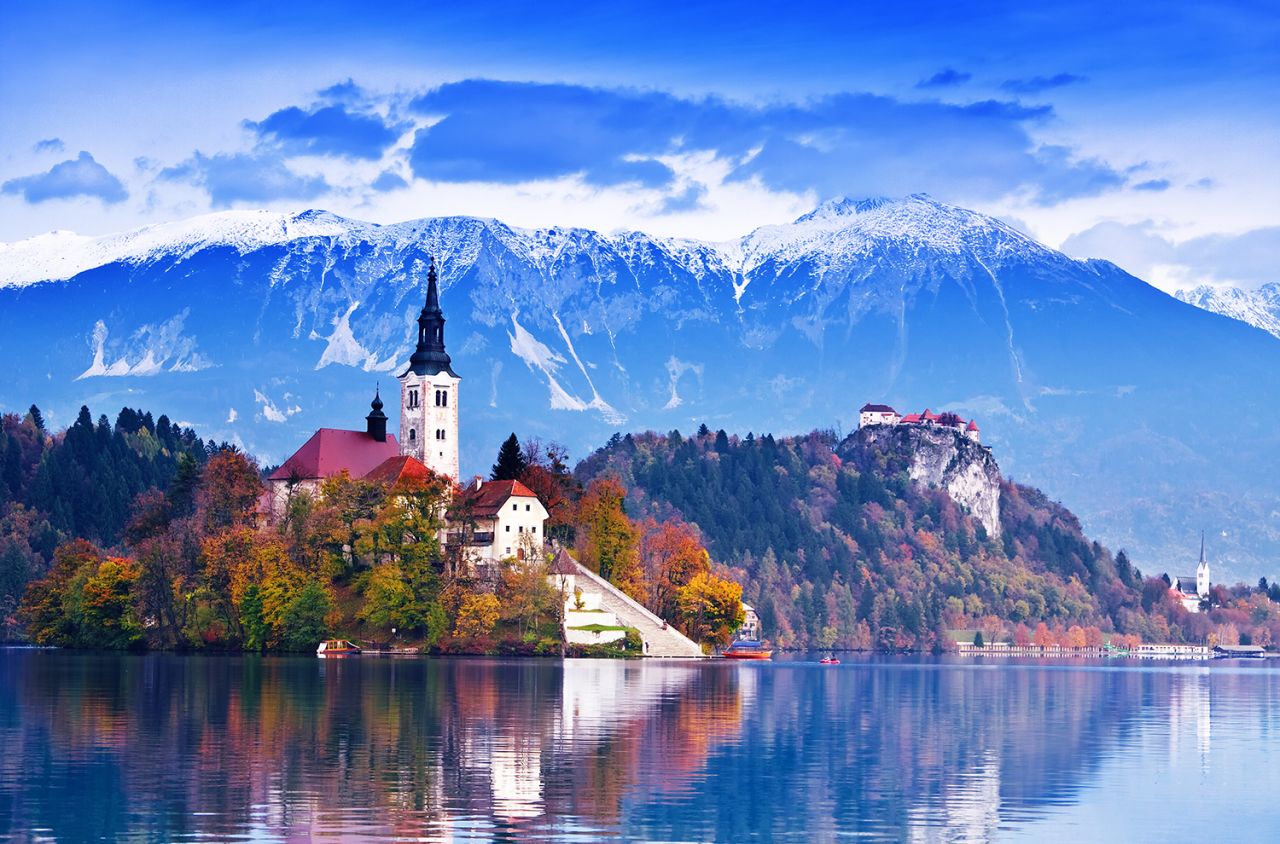
Lake Bled, Slovenia. Image licensed via Adobe Stock
If you're not familiar with this small European nation, don't worry, you're not alone. Slovenia is not a high-profile destination in terms of either tourism or working abroad. Some get it confused with Slovakia, and most don’t see beyond the fact that it was formerly part of Yugoslavia.
But Slovenia is actually quite different from its Balkan neighbours. Enjoying a long border with northern Italy and dominated for most of its history by the Austro-Hungarian empire, this little country has a very strong sense of its own identity.
That can be seen in its language, which is one of the smallest in the Slavic world, yet boasts dozens of dialects. It’s also apparent in Slovenia's melting-pot cuisine, which takes in influences from a wide range of cultures yet remains fascinatingly different from all of them. And above all, it’s seen in Slovenia’s love of nature, which means that tree-topped mountains are visible everywhere, even from the street of its capital, Ljubljana.
In many areas, Slovenia seems like a place preserved in time, with its pretty, colourful houses and castles, snaking mountain passes, turquoise rivers, glacial lakes and endless panoramic vistas. But it’s also a country that’s fully at home with the 21st century, with all the technology, transport networks and good living you’d expect from any modern EU economy.
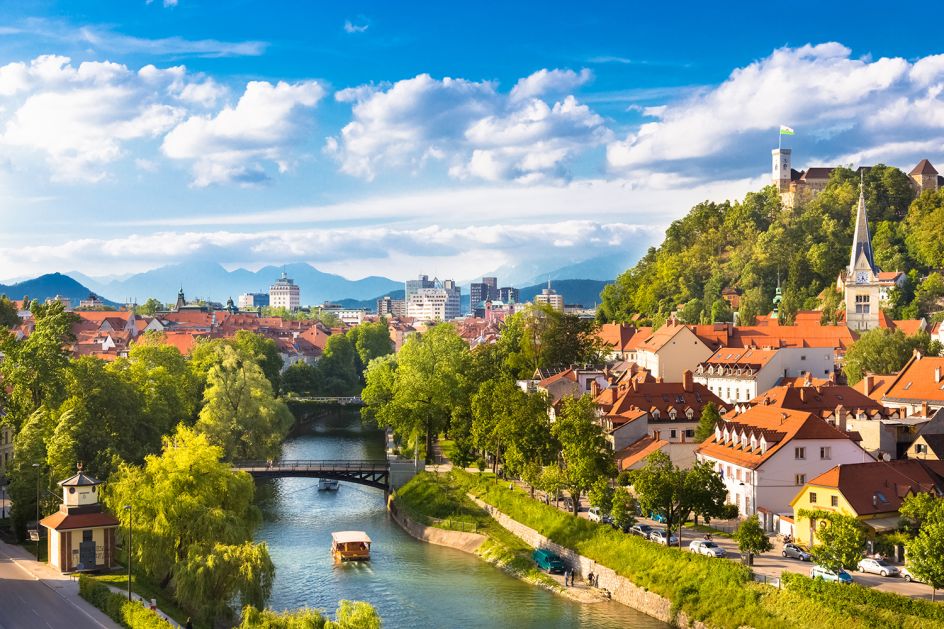
View of Ljubljana. Image licensed via Adobe Stock
I was lucky enough to spend a week here in the company of the Slovenian Tourist Board this summer. And I learned that while this is not a big country (you can drive across it in a couple of hours, and the population of its capital, 278,853, is smaller than Bolton), it is a diverse and endlessly fascinating one. So whether you’re a global nomad looking for a new place to live and work, or just want a short break away from the day-to-day, it’s well worth checking out.
Co-working spaces
In Ljubljana, Slovenia’s capital, there is a range of cool co-working spaces to choose from. For starters, there's Poligon, which serves as both a creative hub and a training ground for creative communities and freelancers. Based in an abandoned Tobacco Factory, Poligon offers 60 flexible desks and seven offices, as well as a maker lab, photo services, a crowdfunding lab, an event space, a conference room, and a bar, shop and library.
With the emphasis on being more than just a coworking space, the space is also available for events, workshops or gatherings. Poligon is open Monday-Friday, from 8am to 7pm, and during events), and desks start at 12 euros a day.
Alternatively, there’s Mesto oblikovanja Slovenija, aka Design City Slovenia, which offers 66 workstations and 20 workshop studios. There’s a big emphasis here on generating synergies and networking; especially as members of the Design Center of Slovenia and the Creative Center for Wood also reside here.
A number of events take place here throughout the year, giving co-workers the opportunity to meet new people and learn new things. Offering a relaxed and friendly environment, co-working here includes the use of a shower and kitchenette and access to physical mail. Prices start from 15 Euros per day, 50 Euros per week, or 150 Euros per month.
If you’re interested in 3D and maker technologies, meanwhile, you should head to Roglab, a converted former bicycle factory that's open to “students, design professionals, innovators, researchers, creative hobbyists, children, inhabitants and visitors”. There’s lots of cool equipment to use here, including a CNC cutter, although you need to apply in advance and complete some training before they’ll let you loose on it.
To get a computer and/or desk here, you’ll need a monthly membership, which starts at 15 Euros for one month, 40 Euros for three, or 100 Euros for a year. Its cafe, Kavarna Rog, designed by local award-winning architects, is pretty darn cool too.
Meanwhile, if you’re a student, make a visit to Kampus, a student centre in the centre of Ljubljana. Here you’ll find a student incubator with a great coworking space, which offers support to student projects and start-up companies. There's also a student study space, a multi-purpose hall designed for educational events and art exhibitions, as well as a shop, a pizzeria and a cafe.
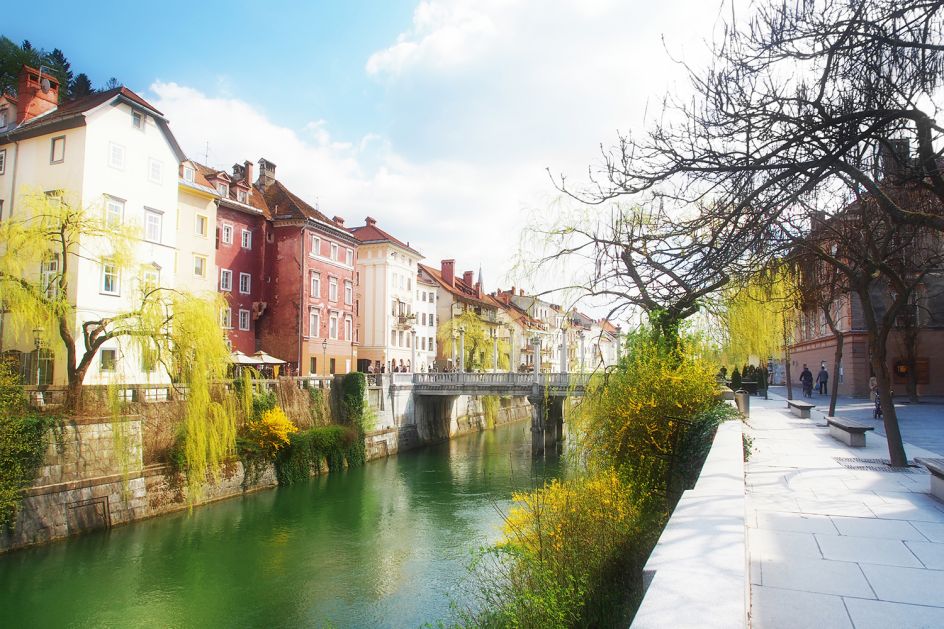
The Cobblers' Bridge, Ljubljana. Image licensed via Adobe Stock
Creative funding and courses
Slovenia is keen to encourage its creative industries, and there are a number of organisations dedicated to making that a possibility. A good point to start is Motovila, which can help with networking, provide information and advice on the financial mechanisms for funding and support in the cultural and creative sectors. It also provides 60 courses in creative and cultural subjects.
The nation is doing a lot to develop its digital industries too, under the umbrella of Erudite, an EU initiative to “define sustainable business models for digital service development and deployment”. Right now, Slovenia is investing heavily in new digital technologies and markets, including the provision of high-speed internet to all communities, digital smart cities, and a dedicated MakerLab open lab at the University of Ljubljana.
Meanwhile, there’s a big reason for anyone doing a university degree to come to Slovenia, as was highlighted by the Michael Moore film Where to Invade Next. Public universities here offer free tuition (yes, free!) for all full-time students coming from the EU, as well as other non-EU countries that have reciprocal agreements. And you don’t have to learn Slovenian to take advantage of this: the University of Ljubljana, for example, has more than 100 courses in English.
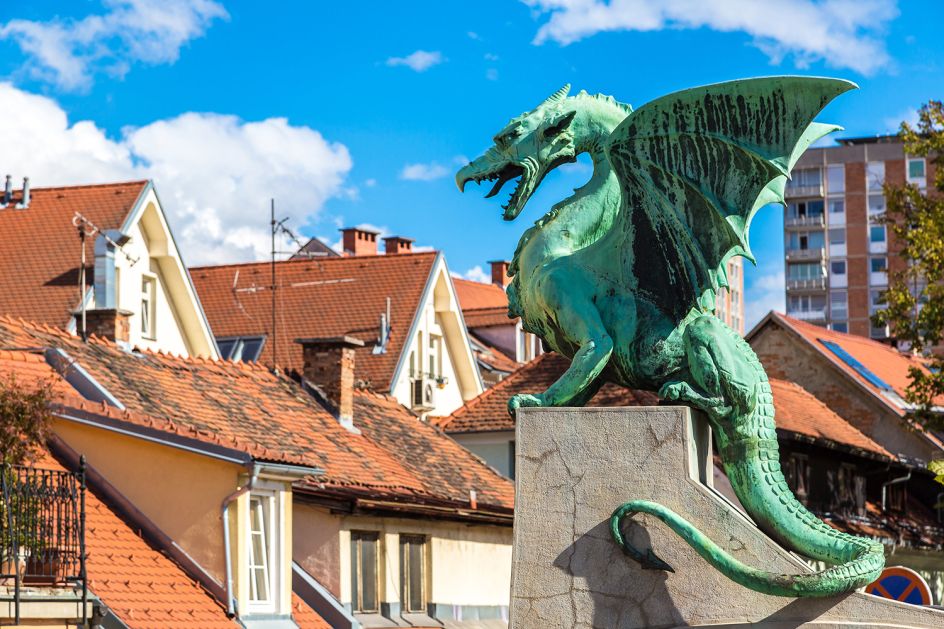
Famous Ljubljana Green dragon at Dragon Bridge, Slovenia. Image licensed via Adobe Stock
Creative hotspots
Wandering the quiet, pretty streets of Ljubljana, Slovenia's capital, you probably won’t expect much in the way of cutting edge, creative events to be going on. But you'd be wrong.
Take, for example, Metelkova Mesto, an alternative cultural centre that grew out of a squat in a former Yugoslav army barracks, and now hosts art performances, exhibitions, live music, literature events, plays, lectures, clubs and festivals. Within its walls, there’s even a hostel based on a converted prison from Austro-Hungarian times, which was described as the “hippest hostel in the world” by Lonely Planet.
Another thriving cultural centre is the Kino Šiška Centre for Urban Culture, which hosts more than 300 events with over 100,000 visitors a year. Constructed from a former cinema, it’s home to a variety of local and global events, from an international dance festival to modern art exhibitions.
And if you want to get your creative kicks outside the capital, make your way to Creative Camp Sajeta, a Slovenian institution that’s been running since 1998. This annual festival features music, film, multimedia, poetry, sculpture, performances, dance, and graphics. And it’s not just about passive consumption, but features a wide variety of workshops, ranging from literature, music and film production to wood carving and Linux programming.
Where to eat
There are many great places to eat in Slovenia’s capital, and when I went this summer the prices were still quite affordable, despite a poor exchange rate between the pound and the euro. If you’re looking for a table with a view, then you won’t do better than Restaurant Strelec. Perched up high in the courtyard of Ljubljana Castle, the views of the city are simply stunning, and the food’s not half bad either. It specialises in local cuisine and the sommeliers will be able to tell you everything about the (globally underrated) Slovenian wines.
A mixture of Mediterranean and Slovenian food is on offer at Restaurant Manna, a cosy canal-side restaurant just a short walk from the old town. The food here more than lives up to the slogan emblazoned across its front: ‘Manna: Božanske Jedi na Zemlji’ (Manna: Heavenly Dishes on Earth), and it strikes a great balance between fine dining and a homely feel. As does Špajza, which prides itself on home cooking with style, cooked with fresh ingredients straight from the farmers’ market. You’ll find rabbit, lamb, goat and even horsemeat on the menu here.
If you want a slice of social responsibility with your food, then give Gostilna Dela the benefit of your time and money. Like Jamie Oliver’s Fifteen in the UK, the aim of this bright and light daytime restaurant is to help disadvantaged people re-assimilate into society. Serving breakfast, lunch, coffee and drinks, the prices here are very affordable.
Outside the capital, there are too many top-notch Slovenian restaurants to mention here, but one that certainly deserves a mention is Hotel Hvala in Kobarid. A delightful, family-run hotel, it's a great place to sample local trout and freshwater crayfish, cooked to perfection, as well as other seasonal treats. Many Italians cross the border to come here, which could be considered the ultimate in culinary compliments.
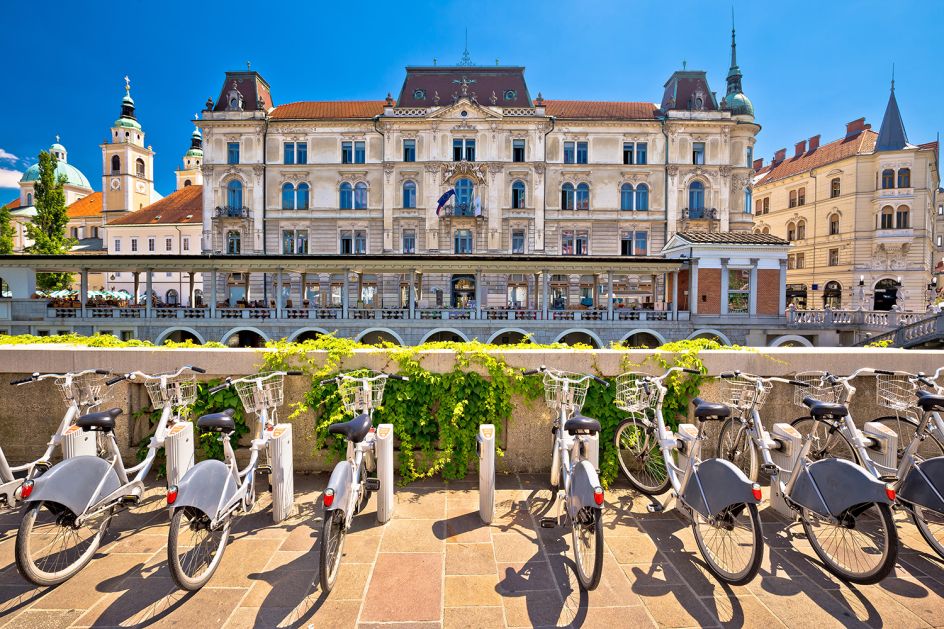
Ljubljana architecture and tourist bikes. Image licensed via Adobe Stock
In the village of Mošnje Radovljica, 7km from the centre of Bled, Vila Podvin Radovljica is another rural restaurant whose food, environment and ambience are pretty darn special. This a-la-carte restaurant is run by one of the chefs at the forefront of Slovenia's culinary revolution, Uroš Štefelin. With a strong focus on local ingredients, he puts a distinctly modern twist on the traditional cooking he remembers from his childhood.
If you really want to go old-school, then why not take lunch at the Gostilna Gastuž, the oldest continuously open pub in Slovenia (founded 1467). Next, to the famous Charterhouse Žice monastery (which we'll get to in a few paragraphs), it's another great place to get traditional Slovenian food with a modern touch.
Finally, you may not know this, but Slovenia boasts the world's best female chef, Ana Roš, and you can taste her cooking at Hiša Franko. Expect nothing less than innovative, surprising and above all, explosively tasty dishes at what is undoubtedly one of the best restaurants in the world.
Where to drink in Ljubljana
You'll find no shortage of lively bars in Slovenia's capital. People here love their beer and treat it seriously, so you're unlikely to find a low-quality tipple here. But if you want to taste the very best, then head to Union Pivnica. Once the old workers' canteen of the Union brewery, this huge bar has been converted into a modern, warehouse chic style, and offers pale, dark and amber ales, including unfiltered versions. There are some pretty tasty beer sausages to mop up all that liquid too.
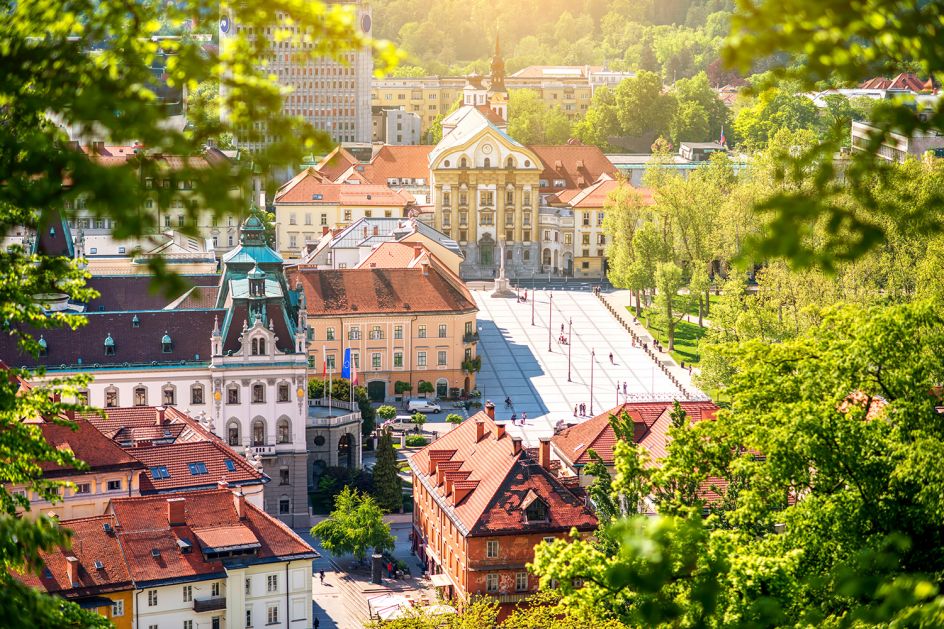
Aerial cityscape view with Ursuline church of the Holy Trinity in Ljubljana. Image licensed via Adobe Stock
For the ultimate hipster hangout, TOZD takes the crown. With the trademark fixie bike on the wall and a modern-retro look, Tozd has a range of interesting local craft beers and a lovely patio for sunny evenings. Or if cocktails are your thing, then head to Centralna Postaja, which boasts a great array of cocktails, street-art styled decor, fast-food bites and homemade fruit teas, as well as DJs at the weekend, an art gallery and a mini tourist information centre.
The most relaxed bar in Ljubljana, meanwhile, is probably Žmauc. A local legend, this place has a friendly, old-school ambience, a nice patio, and concerts and live DJ sets at weekends. For something newer and a bit hipper, the student-friendly Pritličje is a cool cafe serving coffee by day, cocktails by night. A perfect hangout for liberal and alternative types, with electronic music and a buzzy atmosphere.
Finally, most people don’t automatically think of ‘wine’ and ‘Slovenia’ in the same sentence. But the reason Slovenian wine doesn't get exported much is simply that Slovenians are too busy enjoying it for themselves. Among the many great places to try it out is Dvorni Bar, in Ljubljana on the river’s west bank: a cafe/restaurant by day, a cool wine bar by night. There’s tapas to keep you going between drinks too.
Five tourist things you must do
If you’re staying in Ljubljana’s capital, the one place you must visit is The National Museum of Slovenia. Founded in 1821, this beautiful building stores a rich collection of artefacts, including a permanent exhibition of the applied arts from the 14th century to the present day. With friendly and helpful staff, it’s good to see that information and maps here are provided in English as well as Slovenian, plus all films have English subtitles too.
If you have time, though, you really need to get out of the city and experience the astonishing natural beauty of Slovenia. The nation’s most famous destination is, of course, Lake Bled in north-western Slovenia, a cobalt-blue alpine lake that boasts both an island and a castle; how much more fairy tale can you get? This is by far the most popular destination in Slovenia, but even then, it's still relatively quiet by world tourist-site standards.
If you want a really chilled experience, though, you can’t do better than make a visit to the 12th-century monastery Žiče Charterhouse, in northeastern Slovenia. You may need to ask for directions, as our GPS had difficulty getting us there. But it’s well worth it, as it’s somewhere you’ll feel that time has truly stopped. Or as one Irish traveller wrote in the visitor’s book: “A place that’s difficult to find, and just as difficult to leave.”
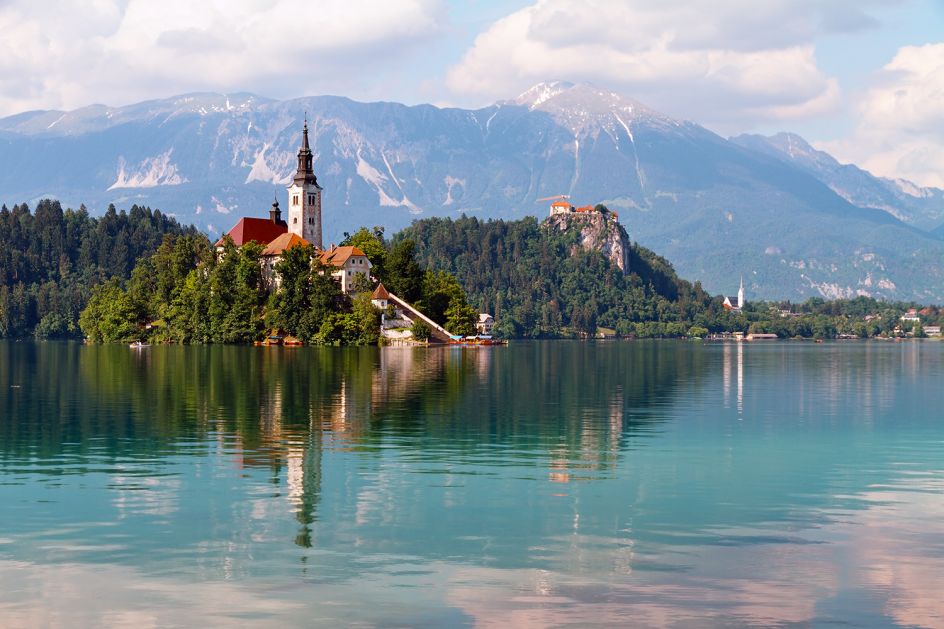
Lake Bled, Slovenia. Image licensed via Adobe Stock
Slovenia is full of nature, and not by accident: over 50 per cent of the country is protected under law. So there are plenty of places to go for a nature walk, but one of the best is Idrija in western Slovenia, where the emerald colour of the waters is quite entrancing. While you’re here you should also check out the Idrija Mine Museum, where you get to descend into the actual tunnels of what was once the world’s second-largest mercury mine and operated for more than half a millennium.
For another eye-opening subterranean experience, head to Križna Jama, aka Cross Cave, in south-west Slovenia. Here you can take a boat trip along an underground river and explore the fourth-largest cave ecosystem in the world by biodiversity. Its epic underground caverns are truly awe-inspiring, and in the darkness and silence, you'll never have felt so wonderfully distant from the modern world.
My thanks to Nataša Kejžar, Mladen Ljubisic and all at the Slovenian Tourist Board for their help in the preparation of this article.

















](https://www.creativeboom.com/upload/articles/d9/d9a834b0c3fdb607f207e2dce2913254732b74ce_732.jpeg)
